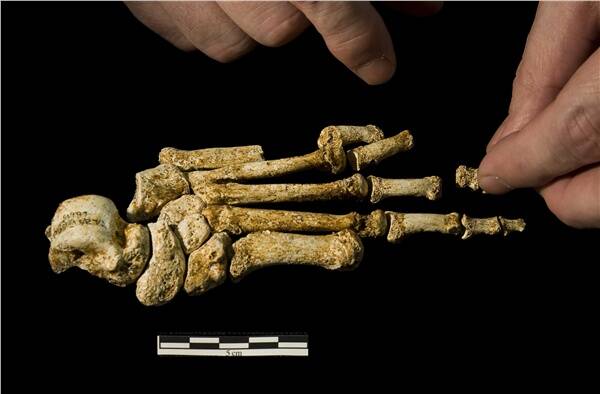

They could walk, but not run well. And their relatively long, arch-less feet were more primitive than ours - more like those of Lucy, an ancient human who lived in Africa 3.2 million years ago. A study of the feet of the tiny, extinct people known as hobbits, who lived on the Indonesian island of Flores until 18,000 years ago, has deepened the mystery of their origins. They do not fit neatly into the picture of how humans evolved and moved around the globe, said Mike Morwood, a co-leader of the Australian and Indonesian team that discovered the remains in a cave five years ago. "They are the wrong species in the wrong place at the wrong time," Professor Morwood of the University of Wollongong said. The foot analysis, by a team led by William Jungers of Stony Brook University in the United States, adds weight to the view that the small-brained people less than a metre tall were a new human species, Homo floresiensis.But the hobbits' primitive feet, along with recently identified primitive aspects of their skull, shoulders and wrists, suggest a very unusual ancestry, he said. They may have been descendants of homo erectus who arrived on the island almost 900,000 years ago and then not only became dwarfed in size, but underwent an evolutionary reversal to have more primitive features. Or their ancestors may have been more ancient humans like Homo habilis or australopithecines like Lucy."Either way the implications for human evolution are profound," said Professor Jungers, whose study showing hobbit feet were stiff, with a straight big toe, but very long in proportion to the lower leg, is published in the journal Nature. Researchers will return to Flores next month to search in different caves, including a more ancient one above the large cavern where the remains were originally found.
Subscribe now for unlimited access.
$0/
(min cost $0)
or signup to continue reading

